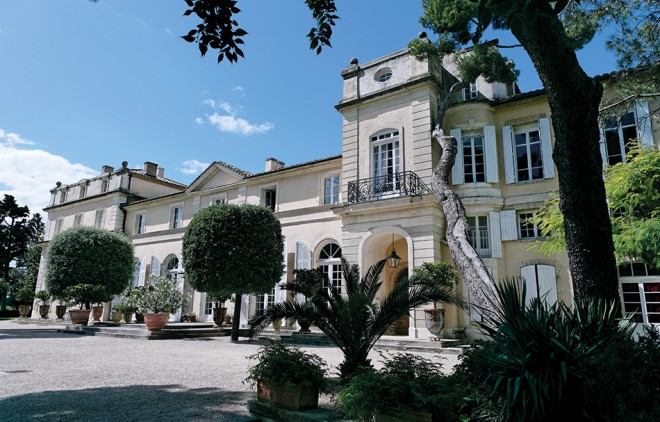
Wine producer since the 12th century, Château La Nerthe is situated right in the heart of Provence, some acres away from Châteauneuf-du-Pape. Visit of a domain filled with history.
Situated in the southeast of France, Château La Nerthe benefits from a Mediterranean microclimate, on a both rocky (De la Crau plateau) and marl and clayey sand terroir covered with pebbles. With vines aged 50 years on average, and even some hundred-year-old stocks, the domain makes of the sentence “one stock, one bottle” its motto, with maximum 25 to 30 hectoliters by hectare.
Certified organic since 1998, Château La Nerthe stands out by the planting of thirteen different vines, covering all the plots of the domain. This diversity enables the crafting of 10% of white wines and 90% of red, all classed AOC Châteauneuf-du-Pape. Today, the domain proposes 5 key cuvees: Château La Nerthe in white and red, Clos de Beauvenir (white), Cuvée des Cadettes (red) but also ‘La Fine du Château de La Nerthe’, an eau-de-vie stemming from the distillation of the Châteauneuf-du-Pape wine.

Though Château La Nerthe is now well-anchored in the current world, with a vinification cellar reorganized and fitted with modern equipments, its walls remain nonetheless filled with history. Indeed, the Château contains, in its cellars dug in the rock in the 16th century, its private reserve and a part of the elevage stone tanks, also dating back the 16th century. As for the second part of the cellar, built in the 18th century with ribbed vaults, it contains elevage wooden tuns and barrels.
Beyond the secrets of its cellar, Château La Nerthe’s history began in the 1870s, when the vineyard, then in agony, spread its wings again. Upon his arrival Joseph Ducos, the new manager, understood the necessity of transplanting the vine on phylloxera-resistent rootstocks and reconstitute the domain. Avant-gardist, he tested at La Nerthe ten varieties of vines whose gustatory role he determined in the assemblage, thus introducing within the domain the notion of multi-grape planting. Pioneer at Châteauneuf-du-Pape, Joseph Ducos implements to vinification of various grape varieties, so guaranteeing great success to the La Nerthe cuvees. Quoted by President Lebrun “as the soul of the wine making reconstruction”, Joseph Ducos, then mayor of Châteauneuf, renames his village ‘Châteauneuf-du-Pape’.
In 1985, the Richard family acquires Château La Nerthe. With a wealth of their knowledge in wine-making acquired in the catering industry, the family, through the contact with the earth, the vineyards and the soils, knew how to surround with men who transmitted them their passion and know-how. First under the aegis of Alain Dugas, then Christian Voeux in 2008, the estate is managed by Ralph Garcin since December, 2015. He has one and only goal: to continue the excellent line established by his predecessors.
Sandy Bénard